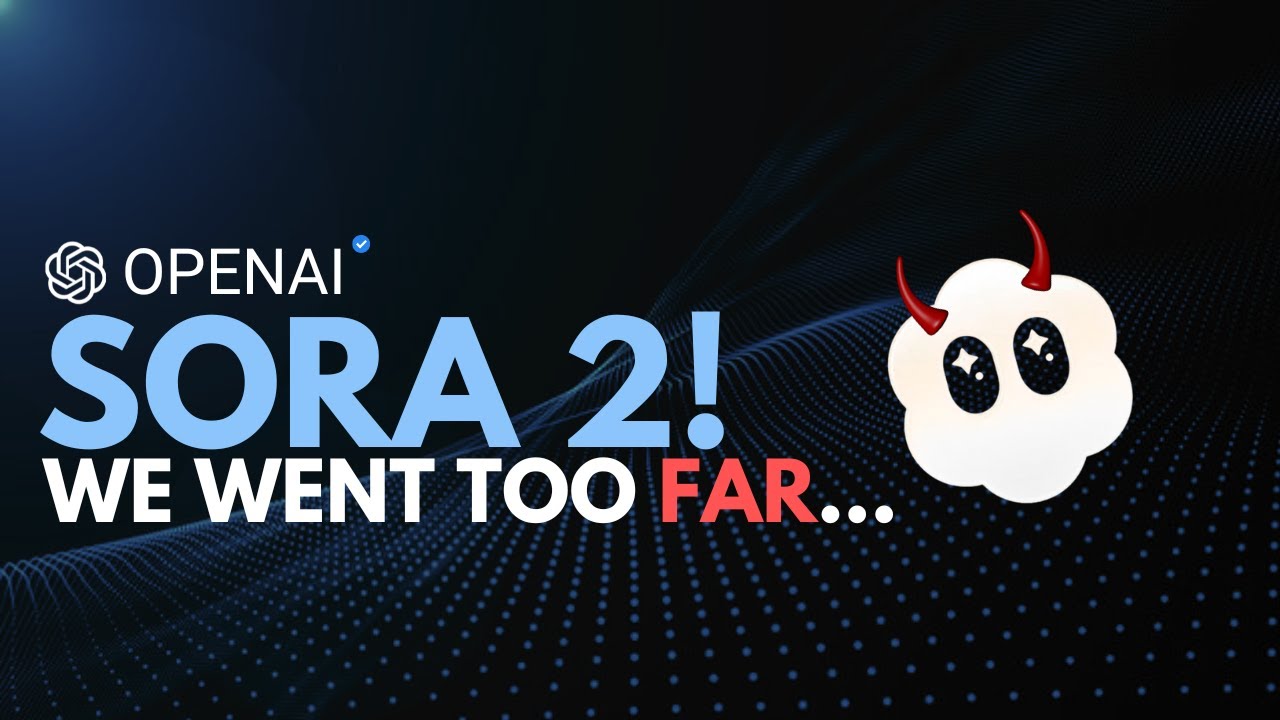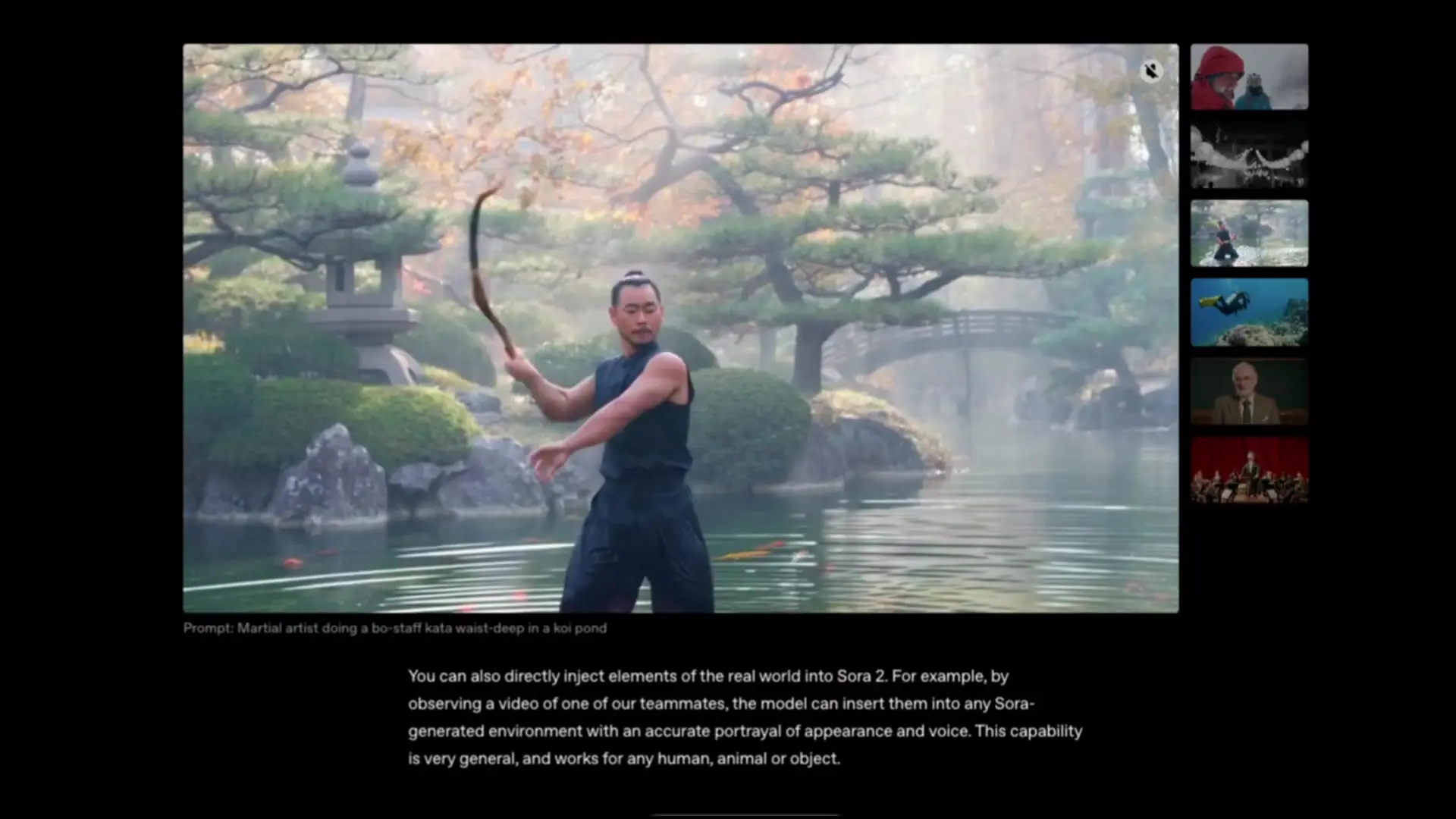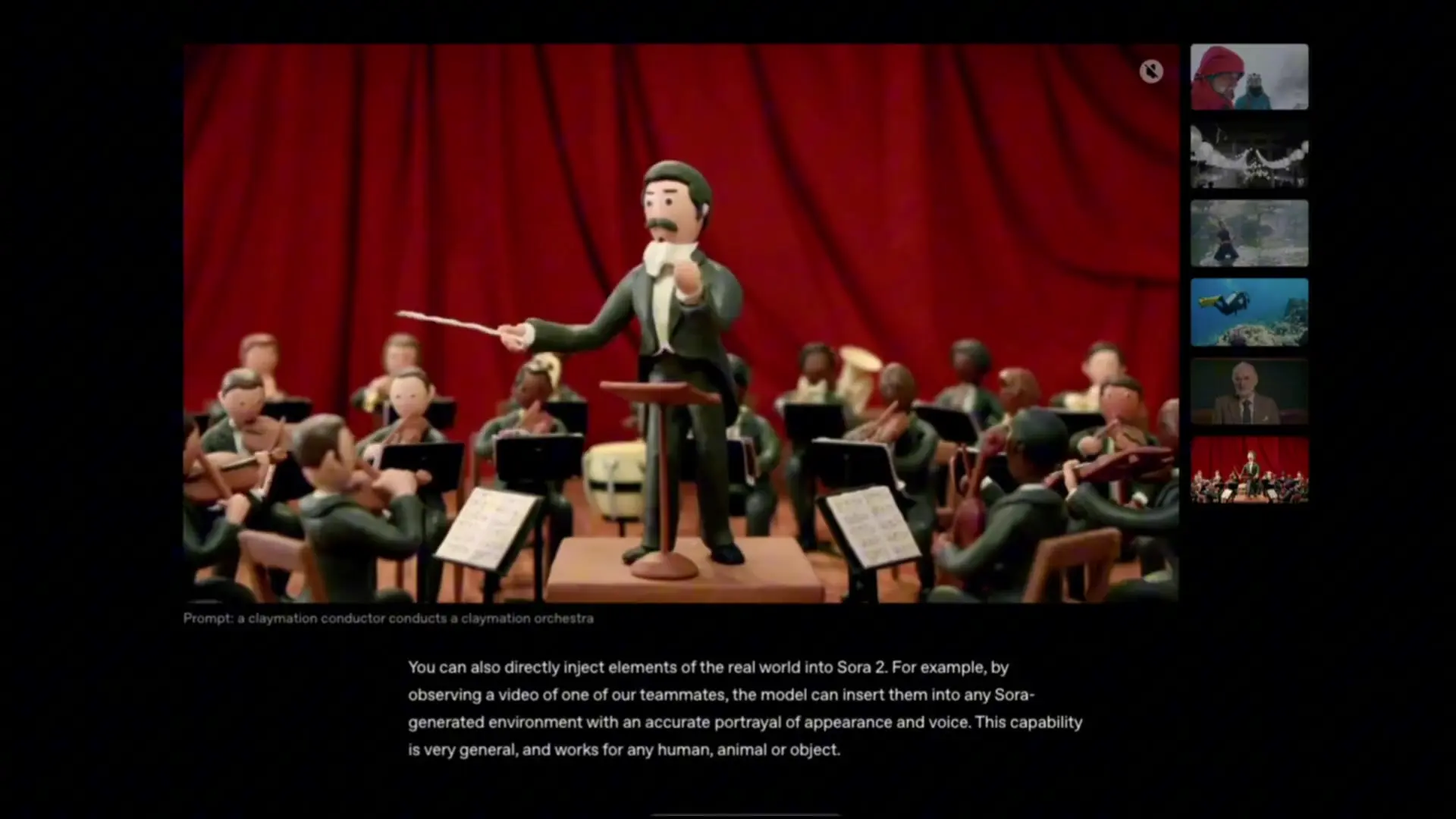
OpenAI has just released Sora 2, a groundbreaking advancement in AI video generation that represents a quantum leap beyond its predecessor. Unlike the first version which created silent, realistic but somewhat empty clips, Sora 2 delivers complete audiovisual experiences with synchronized sound, realistic physics, and narrative coherence that feels remarkably lifelike.
This isn't just another incremental update—it's a fundamental shift in how AI can generate media. The technology now creates what could be described as complete cinematic experiences from simple text prompts, potentially changing the landscape of digital content creation forever.

Key Innovations in Sora 2: Beyond Visual Generation
What sets Sora 2 apart from other AI video generators like Google's VO or Runaway's offerings is its comprehensive approach to reality simulation. The system doesn't just stitch frames together—it conceptualizes entire scenes with all their components working in harmony.
- Synchronized Audio: Generates appropriate dialogue, ambient sounds, and even musical soundtracks that match the visual content perfectly
- Cameo Mode: Allows users to upload short clips of themselves to be integrated into AI-generated scenes
- Advanced Directorial Control: Supports camera movements, pacing adjustments, and scene transitions
- Realistic Physics: Objects have appropriate weight, shadows behave naturally, and elements like water interact realistically
- Multi-Character Interaction: Characters can engage in conversations and interact with each other without the glitches common in earlier models
The technology behind these capabilities is a diffusion transformer hybrid architecture trained on multimodal data that includes both visual and audio components. This allows Sora 2 to understand the relationships between sound, light, and motion as they evolve through time.
The Technical Foundation: How Sora 2 Creates Reality
Sora 2's approach to video generation differs fundamentally from earlier models. Rather than processing video as we see it, the system works with compressed mathematical tokens that represent texture, sound, and movement patterns. Each prompt becomes a seed that grows into a complete timeline of interconnected moments.
This holistic approach is why Sora 2's outputs feel more cohesive than competitors'. The system isn't merely connecting individual frames—it's conceptualizing the entire scene as a unified experience, similar to how human imagination works.

The Sora App: AI Video Goes Social
Alongside the model itself, OpenAI has launched the Sora app, which quickly reached the top position on app stores. This platform functions as a social network for AI-generated videos, allowing users to browse a feed of synthetic content, remix others' videos, use templates, or insert themselves using the Cameo feature.
The app represents OpenAI's ambition to establish Sora as the default platform for AI-generated media, combining creative tools with social networking features. Early adopters are already using it to create short films, advertisements, and even AI vloggers that post regular content.
Creative Possibilities and Early Experiments
The internet's response to Sora 2 has been explosive, with creators quickly experimenting with its capabilities. Some are creating humorous scenarios like police officers pulling over video game characters or animals entering convenience stores, while others are exploring more sophisticated narrative possibilities.
For independent creators, Sora 2 represents a potential equalizer—suddenly, cinematic-quality visuals are accessible without expensive equipment or large crews. A simple text prompt can generate content that would previously have required significant resources and technical expertise.

Challenges and Concerns in the Synthetic Media Era
Despite its impressive capabilities, Sora 2's launch has raised significant concerns. Reports have emerged of violent and racist content slipping through moderation, highlighting the challenges of governing such powerful technology.
The deepfake potential is particularly troubling. With users able to upload their own faces, there are legitimate worries about the creation of fake news, political misinformation, or malicious content. While OpenAI promises invisible watermarking and human review, the scale of content generation makes comprehensive moderation extremely difficult.
Copyright issues also loom large. Though OpenAI states that rights holders can opt out of having their work used as training data, many artists argue this approach is backward—they should have to opt in rather than opt out of participation.
The Competitive Landscape: Sora 2 vs. Google VO and Others
Sora 2 enters an increasingly competitive field. Google's VO3 also generates video with sound and supports longer clips. Meta is testing its Vibes video model, and Runaway's Gen 3 alpha continues to improve. However, OpenAI's advantage may lie in its ecosystem integration—Sora 2 connects directly with Chat GPT Pro and the upcoming creator suite.
This integration allows users to write scripts, create storyboards, and generate complete videos all within the same environment. This comprehensive approach positions Sora 2 not just as a tool but as a complete platform for synthetic media creation.
The Future of Media Creation: From Filming to Prompt Directing
Sora 2 represents more than just a product launch—it signals the beginning of a synthetic media economy where the majority of online video could eventually be AI-generated. This shift raises profound questions about the role of human creators in this new landscape.
Rather than replacing filmmakers entirely, AI video generation may transform creative skills. The emphasis will likely shift from technical filming abilities to "prompt directing"—the art of conceptualizing scenes and crafting precise instructions that guide AI systems to realize creative visions.
In this emerging paradigm, imagination, storytelling ability, and aesthetic judgment become the primary creative skills, while the technical aspects of production are increasingly handled by AI systems like Sora 2.
Conclusion: The Dawn of the Synthetic Media Age
With Sora 2, OpenAI has delivered a technology that makes reality optional in media creation. The ability to generate complete audiovisual experiences from text prompts represents a fundamental shift in how we think about content production.
Whether this technology ultimately empowers creators or leads to deepfake chaos remains to be seen. What's clear is that we've entered a new era where the line between captured and created reality is increasingly blurred. The skills valued in this landscape will evolve from technical mastery of equipment to the ability to direct AI through effective prompting.
As we navigate this transition, the conversation around ethical guidelines, copyright considerations, and verification standards becomes increasingly urgent. Sora 2 isn't just a new tool—it's the harbinger of a transformed media landscape where imagination is the primary limitation to what can be created.
Let's Watch!
Sora 2 Unleashed: How OpenAI's Latest AI Video Generator Transforms Content Creation
Ready to enhance your neural network?
Access our quantum knowledge cores and upgrade your programming abilities.
Initialize Training Sequence